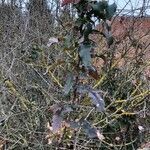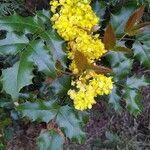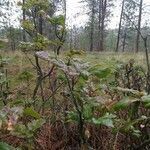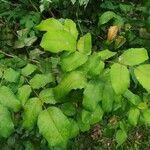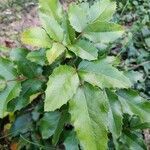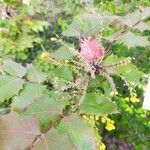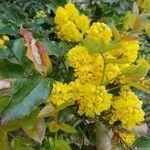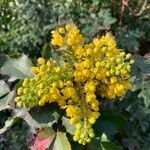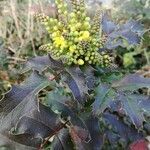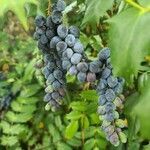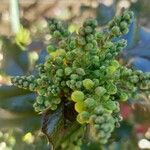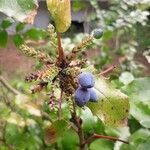Shrub to 3 m high or more, often suckering underground; bark grey-brown; branches without spines. Leaves to 30 (–40) cm long; leaflets (3–) 5–11 (–19), ovate (–lanceolate) or obliquely ovate, to 10 (–14) cm long, to 5 (–6) cm wide, glossy or duller bluish green above, paler and dull beneath; margin flat or undulate, coarsely toothed with 8–35 spines. Racemes 4–8 (–19) cm long, in fascicles of 3–5 or more. Pedicel to 10 mm long. Fruit globose or subglobose, c. 6 mm long, blue to dark blue, pruinose; stigma sessile.
A shrub. It grows 60-90 cm high and spreading 90-150 cm wide. It forms dense suckering thickets. The leaves are divided along the stalk into leaflets. There are 5-7 leaflets on each leaf. They are shiny green. They turn red-purple in winter. The flowers are yellow and densely clustered together. The fruit are grape-like and blue black berries.
